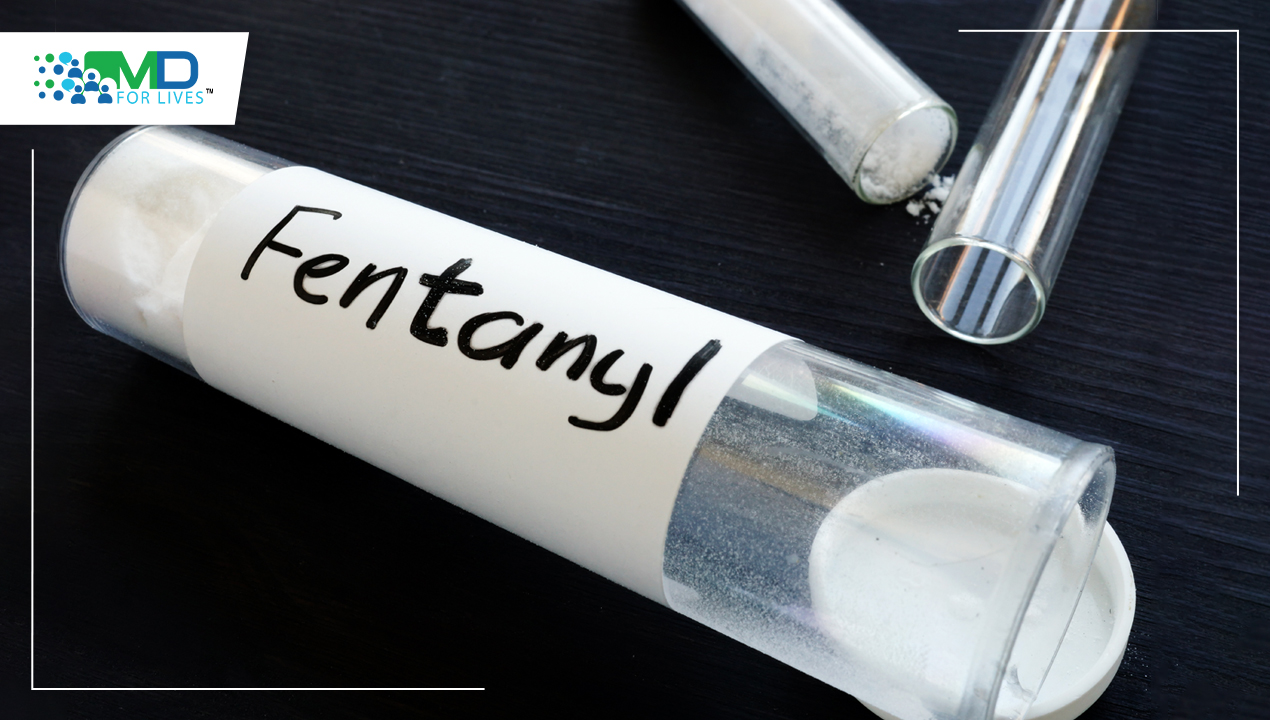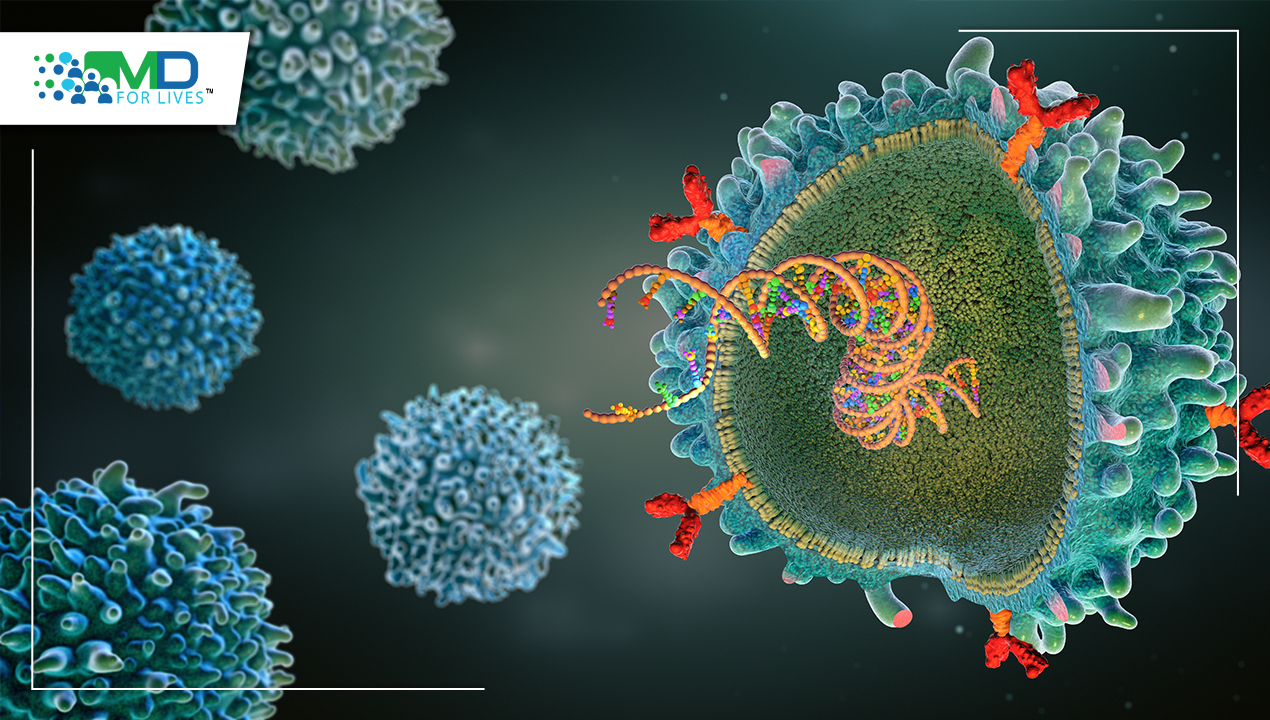COVID-19 is primarily a respiratory viral infection caused by the SARS-CoV-2 virus. COVID-19 is now considered a systemic illness based on the broad-spectrum clinical manifestations associated with the involvement of multiple organs in patients infected with SARS-CoV-2. COVID-19’s immediate complications are well-defined and are frequently associated with increased mortality. However, delayed or long-term COVID-19 complications are becoming more common and are associated with increased morbidity.
Because of severe damage to multiple organs, SARS-CoV-2 has caused terrible global morbidity and mortality rates. Even though many people survive the acute phase of COVID-19, there is mounting evidence that the long-term effects of SARS-CoV-2 infection can have an impact on a person’s quality of life and ability to return to work. Dyspnea, fatigue, loss of taste and smell, cognitive impairment, chest pain, and arthralgia are all common long-term symptoms.
Coronaviruses are RNA viruses with a positive strand that primarily affect the respiratory tract. Because the virus can access human type II alveolar cells via the angiotensin-converting enzyme 2, the lungs are particularly vulnerable (ACE2). Because it cannot reproduce on its own, the SARS-CoV relies on specific host cell factors throughout its infection cycle. The virus replicates within cells by hijacking the body’s own cellular machinery and binding to the ACE2 receptor.
To enter the host cell, SARS-CoV-2 has surface glycoproteins called spikes that connect to the ACE2 receptor. The viral element that attaches to the host receptor via the ACE2 receptors is known as the S-protein spike, and there are two subunit S-proteins known as S1 and S2. The receptor-binding domain of the S1 protein determines the virus-host range and cellular tropism by binding to the host receptor ACE2.
Once on the ACE2 cell surface, the virus induces leukocytic infiltration, increases alveolar wall and blood vessel permeability, and decreases lung surfactants. This causes respiratory symptoms and inflammation, which can lead to a cytokine storm and, ultimately, a systemic inflammatory response syndrome. By forming a six-helical bundle, the S2-protein mediates virus-cell fusion via the H1 and HR2 receptors. The S1 domain is responsible for the induction of immunoglobin G and immunoglobulin A antibody activity. The M-protein of SARs-CoV-2 regulates nutrient transmembrane transport and viral envelope formation. N- and E-proteins, on the other hand, limit the host’s immune response.
Persistent symptoms such as fatigue, diffuse myalgia, and joint and musculoskeletal pain have been reported in surveys of people suffering from the post-COVID-19 syndrome. All of these symptoms are linked to mitochondrial dysfunction, oxidative stress, and low antioxidant levels. The mitochondria may play a role in the pathophysiology and treatment of fatigue associated with the post-COVID-19 syndrome. To compensate for dysfunctional oxidative phosphorylation, mitochondrial bioenergetic dysfunction may result in anaerobic glycolysis. Glycolysis causes cellular damage, and it can inhibit lactate levels and other metabolic pathways.
One possible explanation for muscle aches and fatigue is that the virus infects neurons selectively in order to evade the host’s immune system. SARS CoV-2 can infiltrate the host immune system by entering a dormant state with low replication while infecting neurons. Inflammasome activation, which is part of the innate immune system receptors, has been linked to a cytokine storm and hypercoagulopathy in the infected host. As a result, the person with the post-COVID-19 syndrome may have lifelong infections that can be reactivated whenever the host’s immune system is weakened.

Histopathology
The respiratory, cardiovascular, and hematopoietic systems are commonly affected in post-acute COVID-19 syndrome. Furthermore, the neuropsychiatric, renal, and endocrine systems are all involved to varying degrees. The following sections describe significant organ-specific histopathology findings.
Lungs:
- Lung tissue analysis (autopsy and explanted lungs of lung transplant recipients) with severe COVID-19 pneumonia revealed histopathology similar to end-stage pulmonary fibrosis in the absence of active SARS-CoV-2 infection, implying that some people may develop lung fibrosis after the active infection resolves.
- SARS-CoV-2 infection causes significantly more endothelial damage and microthrombi on lung autopsy than influenza-related ARDS.
- COVID-19 lung autopsies revealed all stages of diffuse alveolar damage, as well as focal and organized fibroproliferative diffuse alveolar damage, which is similar to ARDS. Microcystic honeycombing, myofibroblastic proliferation, and mural fibrosis were also observed on rare occasions.
Heart:
- The histopathology examination of COVID-19 myocardial insult reveals a high degree of variability. 62% of acute COVID-19 autopsy findings revealed the presence of the virus genome in heart tissues.
- Endomyocardial biopsy is the gold standard for diagnosing myocarditis. According to the 1987 Dallas criteria, the presence of lymphocyte infiltration with myocyte injury but no ischemia is consistent with viral myocarditis. However, only 10% to 20% of myocarditis in post-acute Covid-19 syndrome is diagnosed with endomyocardial biopsy. This low sensitivity is a result of sampling error.
- Endomyocardial biopsy immunohistochemistry revealed severe intramyocardial inflammation with increased perforin-positive cells. There is an increase in macrophages, T lymphocytes, and CD45R0 T memory cells. A greater number of cell adhesion molecules (CAMs) such as CD 54/ICAM-1 are present.
Brain:
- A single-center histopathology examination of brain specimens obtained from eighteen COVID-19 patients revealed acute hypoxic injury in the cerebrum and cerebellum of all patients. Notably, no encephalitis or other specific brain changes were observed. Furthermore, no cytoplasmic viral staining was found in brain tissue immunohistochemistry.
Kidney:
- SARS-CoV-2 has been isolated from multiple kidney biopsies, with acute tubular necrosis being the most common finding. COVID-19-associated nephropathy is distinguished by the presence of collapsing variant focal segmental glomerulosclerosis, acute tubular injury, and global tuft involution.1
Manifestations:
Pulmonology:
- Many patients experience persistent respiratory symptoms weeks to months after being diagnosed with COVID-19.
- Endothelial and epithelial damage caused by monocyte and neutrophil invasion results in ARDS via both viral-dependent and independent mechanisms. The most commonly reported physiologic derangement in post-acute COVID-19 is a decrease in diffusion capacity, which is directly related to the severity of acute illness.
- The most common pulmonary sequelae seen in patients with the post-acute COVID-19 syndrome are dyspnea, cough, oxygen dependence, difficulty weaning from mechanical ventilation or NIV, fibrotic lung changes, decreased diffusion capacity, and decreased endurance.
Cardiovascular:
- The most common mechanisms of cardiovascular damage are direct virus-mediated cytotoxicity, ACE 2 receptor down-regulation, immune-mediated inflammation affecting the myocardium and pericardium, and clinical symptoms such as dyspnea, fatigue, myocarditis, decreased cardiac reserve, dysregulation of the renin-angiotensin-aldosterone system (RAAS), autonomic dysfunction, and arrhythmias.
Hematologic:
- In acute COVID-19, hypoxia, endothelial injury, platelet activation, and proinflammatory cytokines result in a disproportionately high thromboembolism.
Neuropsychiatric:
- Microvascular thrombi, systemic inflammation, and direct viral-mediated neurotoxicity are thought to be possible mechanisms contributing to COVID-19 neuropathology. Post-COVID-19 brain fog can be exacerbated by dysautonomia, deconditioning, and posttraumatic stress disorder. Prolonged ICU stay and intubation contribute significantly to COVID-19 patients’ long-term cognitive impairment.
Renal:
- During hospitalization, a significant proportion (20%) of severe COVID-19 patients who required intubation also required renal replacement therapy (RRT).
Endocrine:
- Post-acute COVID-19 endocrine manifestations are influenced by viral injury, inflammatory and immunologic damage. Isolated cases of DKA, subacute, and Hashimoto thyroiditis have been reported weeks after acute COVID-19 symptoms have resolved.
Treatment
Coexisting conditions such as diabetes, chronic kidney disease, and hypertension should be treated as well. Patients should be taught how to self-monitor at home using FDA-approved devices such as a pulse oximeter, blood pressure monitors, and blood glucose monitors. Patients should be encouraged to eat a healthy, balanced diet, practice good sleep hygiene, limit alcohol consumption, and quit smoking. If tolerated, a structured exercise program with aerobic and resistance components should be recommended, assuming that there are no other contraindications. Simple analgesia with acetaminophen should be considered as needed.

Pulmonology: Patients who have persistent symptoms may benefit from enrolling in a pulmonary rehabilitation program, which is essential for faster clinical recovery, and vaccination against influenza and Streptococcus pneumonia.
Cardiology: To rule out arrhythmias, heart failure, and ischemic heart disease, cardiac function tests such as EKG and echocardiography must be considered. If clinically indicated, an MRI of the heart can be considered to evaluate for myocardial fibrosis or scarring.
Haematology: Current CHEST guidelines recommend that COVID-19 patients who develop proximal deep vein thrombosis or pulmonary embolism receive anticoagulation therapy for at least 3 months.
Neuropsychiatric: If there are concerns about seizures or paresthesia, EEG and EMG should be considered. Patients should be screened for common psychological issues like anxiety, depression, and insomnia, and HbA1c, TSH, thiamine, folate, Vitamin B12, and Vitamin B12 levels should be checked to rule out other contributing metabolic conditions.

Post-acute COVID-19 syndrome is a growing complication of COVID-19, and secondary complications associated with this syndrome are currently unknown. More clinical data is needed to fully comprehend the long-term consequences of this syndrome.

MDForLives is a vibrant community of healthcare professionals and patients dedicated to shaping the future of healthcare. We provide valuable global insights to healthcare companies through online surveys, interviews, and discussion forums.






